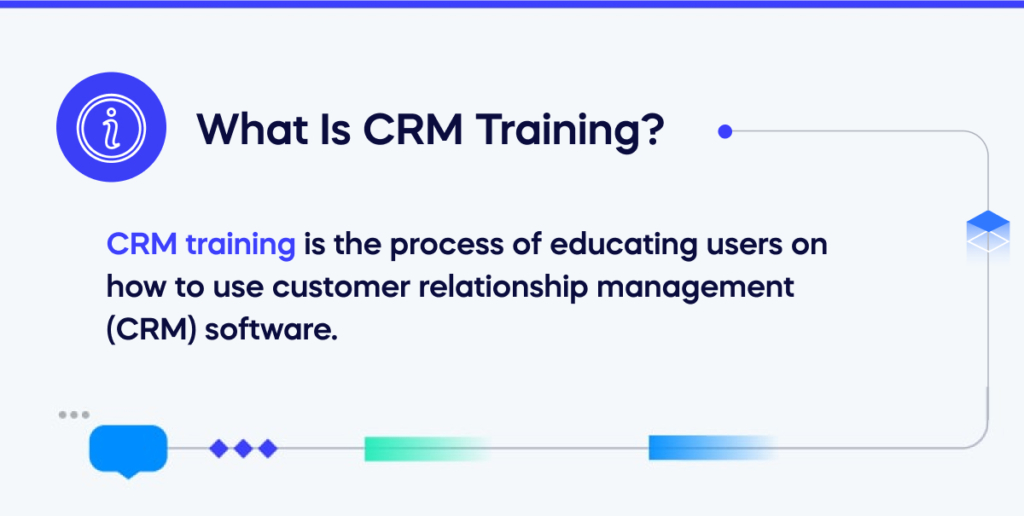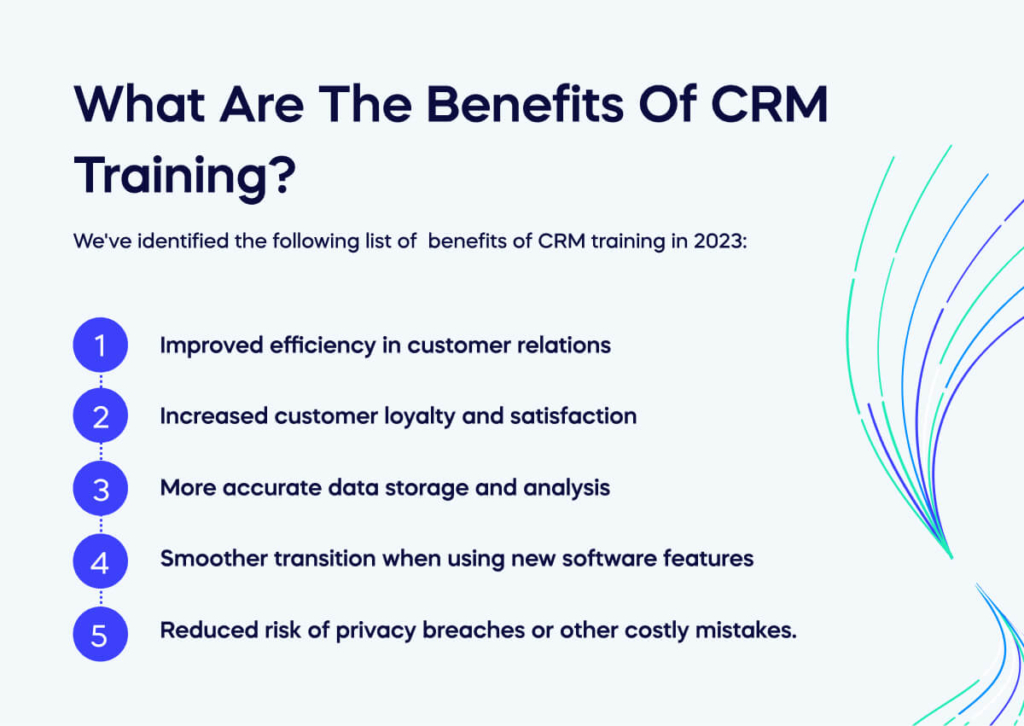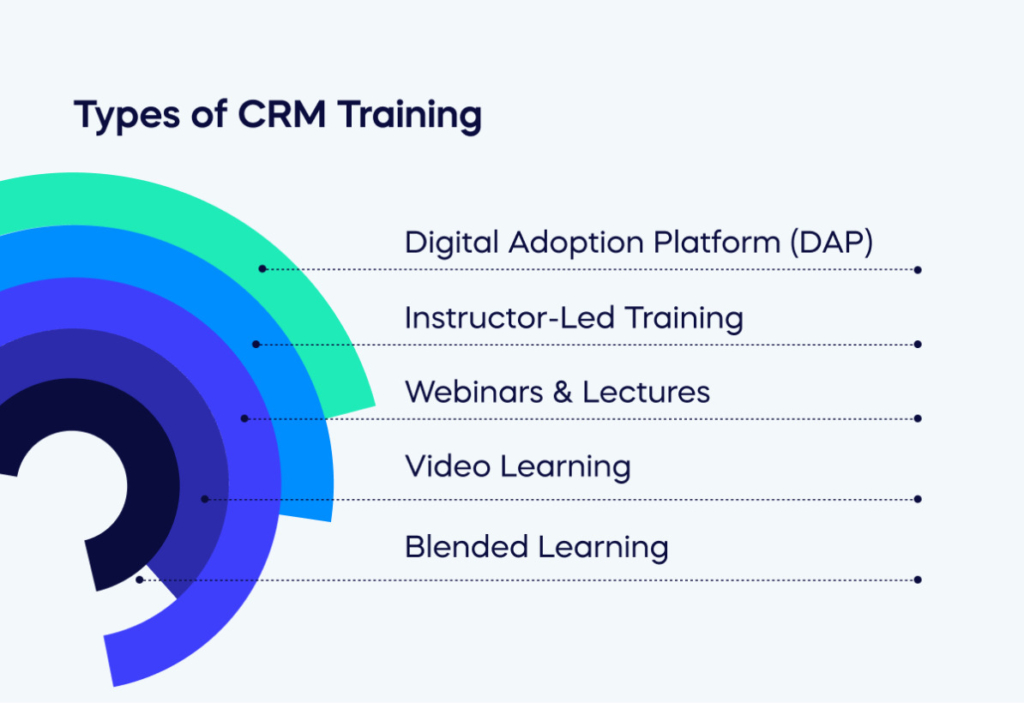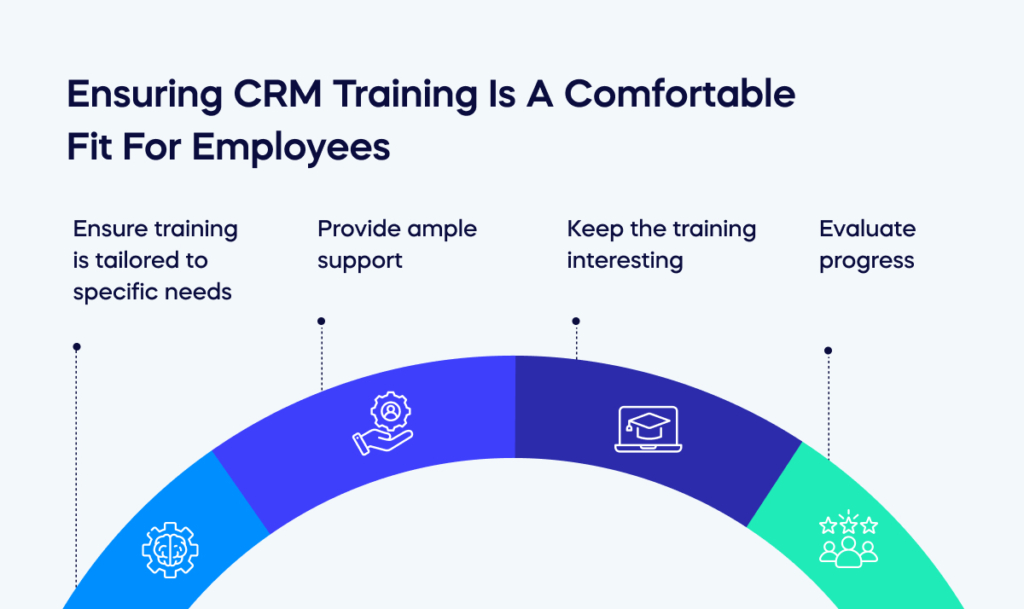CRM training is becoming increasingly important as businesses worldwide continue to focus on customer relations and loyalty.
Good customer service is crucial in today’s highly competitive and uncertain global market. According to Gartner, in order to succeed, service leaders must rely on CRM systems and strive to improve the overall customer experience.
However, it is important to remember that CRM and CX strategies must evolve with the organization, its customers, and the environment. Neglecting to keep up with these changes can be risky for the organization.
Companies invest in CRM training to ensure their employees are properly qualified to use the software and data to maximize their potential. Maximizing customer relationship management (CRM) software is only possible when team members know how to use its various functionalities.
But how much do you really know about CRM training? The truth is the field is constantly evolving, and there are some key changes that you should be aware of in order to remain competitive in 2023 and beyond.
This article will provide an overview of the most up-to-date CRM training relevant in 2023, including emerging trends and best practices. We’ll then cover the basics of setting up an effective CRM training program for your team, the different types of resources available for training users, and how to ensure everyone is comfortable with the system.
We’ll also discuss some of the most common challenges teams face when it comes to CRM training and how to overcome them. By the end of this article, you should have a better understanding of what CRM training in 2023 looks like, the transition period, and how to set up the right program for your team.
What Is CRM Training?

CRM training is the process of educating users on how to use customer relationship management (CRM) software.
The training covers instructions on utilizing all the software features and correctly handling customer data, including storage and retrieval. It also includes guidance on maximizing customer data to enhance customer satisfaction and increase loyalty.
Why Is CRM Training Important?
CRM training is important because it helps ensure that users are properly trained to use the system. Without this education, users won’t be able to maximize the potential of the software or get the most out of customer data.
An effective CRM training program helps provide a smooth transition when using the software, allowing users to quickly become familiar with its functionalities. It also helps prevent costly mistakes and ensures customer data is properly handled to guarantee privacy.
What Are The Benefits Of CRM Training?

CRM training is beneficial for both companies and their employees.
Companies can learn how to effectively use their CRM system to manage customer relationships and streamline processes.
For employees, CRM training can help them to better understand the customer journey and improve their ability to provide excellent customer service.
We’ve identified the following list of benefits of CRM training in 2023:
- Improved efficiency in customer relations
- Increased customer loyalty and satisfaction
- More accurate data storage and analysis
- Smoother transition when using new software features
- Reduced risk of privacy breaches or other costly mistakes.
According to McKinsey, Updating CRM and CX strategies as the organization, customers, and environmental change is crucial. If not, the organization could be endangered. The data from Gartner shows that investing in the right CRM training program is essential for staying competitive in 2023 and beyond.
Types of CRM Training

When it comes to CRM training, there are various types of resources available. It’s important to identify the best fit for your team, depending on their experience level and your organization’s specific needs.
Here are some common types of CRM training options:
Digital Adoption Platform (DAP)
DAP is a cloud-based platform that provides users with interactive training materials, tutorials, and simulations. It can teach users how to utilize the software and helps users become proficient in a short timeframe.
The Benefits: DAP is an efficient way to get users up-to-speed on the software, as it provides detailed instructions and visualizations. It also eliminates the need for manual training, as it’s a self-paced platform.
The Drawbacks: It can be costly, depending on the features needed. Additionally, it might not be able to cover all use cases, so manual training may still be necessary.
Instructor-Led Training
This type of training involves an expert knowledgeable about the software providing instruction in a classroom-like setting. This training is ideal for new users as it helps foster a better understanding of the system.
The Benefits: Instructor-led training benefits new users by allowing them to ask questions and get feedback from an expert. It also helps ensure that users understand and use the software correctly.
The Drawbacks: It can be costly, as it requires resources in terms of instructor fees, training materials, and physical space for the class.
Webinars & Lectures
Companies often host webinars and lectures to give users a more in-depth look into the system or discuss best practices. This type of training is great for users who need a refresher on how the software works or want to stay up-to-date on the latest features.
The Benefits: Webinars and lectures are convenient as they can be accessed remotely. They also help ensure users know the latest features, best practices, and tips.
The Drawbacks: Webinars and lectures can be difficult to find, as they are usually hosted by third-party companies. Additionally, they may be unable to provide the in-depth instruction necessary for new users.
Video Learning
Video learning is a popular training method and is very convenient. Companies can create instructional videos to help users learn how to use the software, which can be accessed anytime, anywhere.
The Benefits: Video learning is convenient as it can be accessed remotely. It’s also a great way to learn in-depth information about the software.
The Drawbacks: Videos can be lengthy and may not cover all topics. Users may also need to pause the video and ask questions, which can be difficult if not in a classroom setting.
Blended Learning
Blended learning combines classroom instruction, webinars, videos, and other resources to help users master the system. It’s a great option for providing comprehensive training on how to use the software.
The Benefits: Blended learning provides users a comprehensive look into the software. It also allows them to learn in various ways, which can help keep them engaged.
The Drawbacks: Blended learning can be costly as it requires various resources and instructors to guide the sessions. It can also be difficult to keep track of progress and measure the program’s overall success.
When choosing a CRM training option for your organization, it’s important to consider the type of instruction best suited for your users. Different training methods have pros and cons, so it’s best to weigh all of your options carefully before making a decision.
The Challenges of CRM Training
Aside from choosing the right training method, organizations face a few other challenges when training employees on CRM software.
The first challenge is staying up-to-date on the software. CRM systems constantly change, so keeping employees up-to-date on the latest features is important. This can be done through webinars, lectures, and other forms of training.
Another challenge is finding time for training. With a busy work schedule, finding time for employees to attend training sessions can be difficult. To overcome this, companies can provide online or video-based learning options that employees can access when convenient.
DAP: A Solution To CRM Challenges
A Digital Adoption Platform (DAP) can track users’ progress and measure their success. DAPs are designed to deliver targeted guidance, resources, and support to each user during onboarding. This helps companies ensure that users can fully understand and utilize their software applications from the start.
A DAP is a comprehensive solution for digital adoption and engagement. It provides each user with personalized guidance, support, and resources throughout onboarding. DAPs can also track users’ progress to measure their success in learning the software application.
And if that doesn’t sound enticing enough, DAPs can seamlessly integrate with CRM systems and other enterprise applications, allowing companies to leverage their existing data and resources to further personalize the user experience.
Ensuring CRM Training Is A Comfortable Fit For Employees

Companies must ensure that their employees are comfortable with the training they receive. If a user is feeling overwhelmed or confused, they may be less likely to use the software in their daily tasks.
To ensure that employees are comfortable with their CRM training, companies should do the following:
- Ensure training is tailored to specific needs. Every user has different levels of experience and understanding, so instructors should provide instruction accordingly.
- Provide ample support. Employees should have access to a knowledgeable source (such as an instructor or mentor) who can answer their questions and help them when.
- Keep the training interesting. Employees may become bored or disinterested if the training is too long or dull. Incorporate quizzes, activities, and other fun elements to keep users engaged.
- Evaluate progress. Companies should track users’ progress to ensure they retain their knowledge. This can be done through assessments, quizzes, and other forms of testing.
CRM Training: What Next?
Once users have a solid understanding of the system, they should be encouraged to practice and explore it. This can involve playing around with different features, working with different databases, and learning how the system works in real-world scenarios.
Organizations should also provide ongoing support for users. This could include refresher courses, employee training, and other resources to help keep users up-to-date with the latest features and best practices.
By taking the time to implement a comprehensive CRM training program, companies can be sure that their employees are getting the most out of their CRM system and increase employee retention. This will help ensure their system is used efficiently and effectively, boosting productivity and performance.


